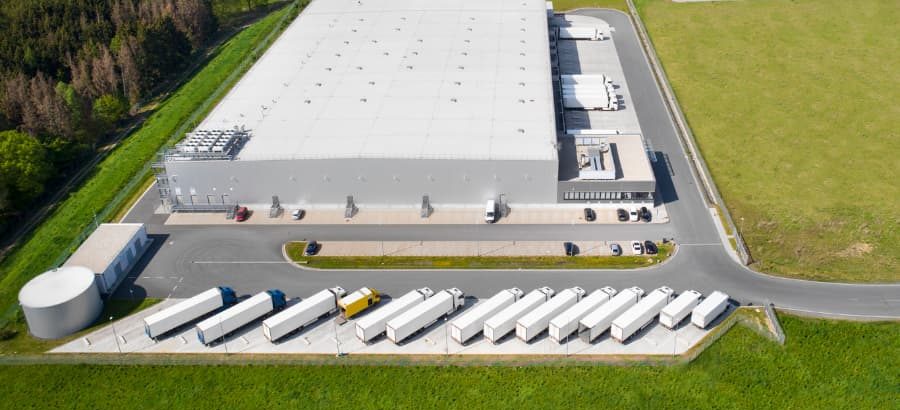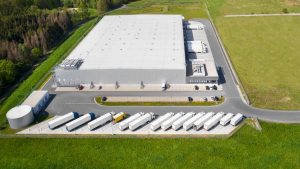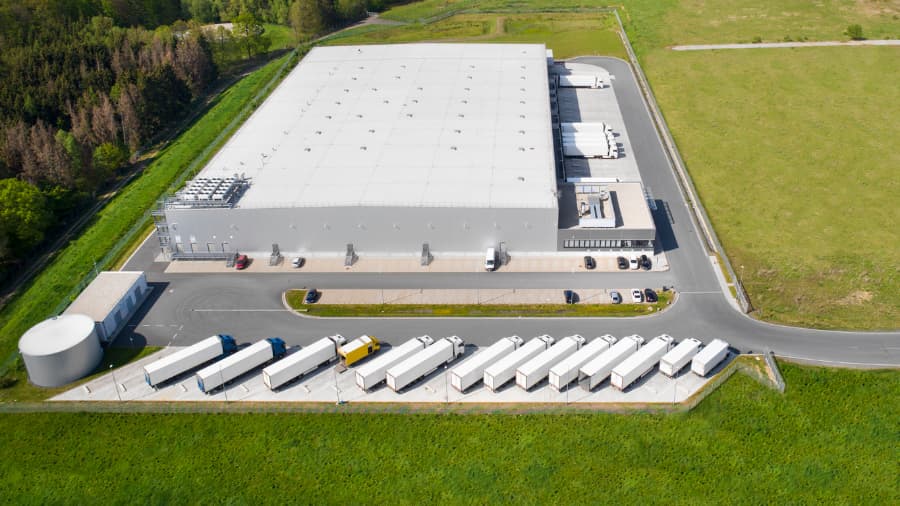


There’s much more to choosing a roof than simply selecting the least expensive or most attractive option. In fact, finding the right roof design for a commercial building depends on many factors, including the property’s shape. Here, McDonald & Wetle explain the relationship between building shape and roof design.
Flat Roofs
Flat roofing is a popular commercial option, and for good reason. It’s the most cost-effective solution for covering very large spaces, requiring fewer materials and less manpower to install or maintain. It’s also very practical and works well with a wide range of shape configurations, from simple squares to complex facilities with multiple wings. Large warehouses, retail stores, office towers, and apartment complexes often opt for a flat roof, but smaller structures may do so as well. Some of the reasons why include:
- Safe, fast, and easy installation over large areas
- Less material required, letting businesses save on expenses
- Safe and easy to maintain as necessary
- Accessible exterior storage space for HVAC units and other systems
Yet not every commercial structure is right for a flat roof, especially those with a more traditional style. Flat roofing cannot accommodate roofs with architectural features like gables, dormers, bell towers, steeples, cupolas, and more that are often found on historic buildings, churches, and similar structures.
Sloped Roofs
Sloped roofs are common on residential homes but may also be used for commercial roofing. They’re an excellent option for smaller buildings and those featuring complex shapes, distinctive angles, and sharp gradients. The steep slope encourages water to drain quickly, preventing pooling and ice accumulation. This keeps maintenance costs low. Meanwhile, the space under the roof can be used as an attic for storage.
With a classic appearance, sloped roofs are often used to maintain a timeless look and feel. In commercial applications, they are a popular choice for churches, hotels, shops, and restaurants. Historic restorations frequently use sloped roofs as well to maintain the structure’s traditional aesthetic.
Roofing Material
Your building’s shape also has an impact on which materials are most appropriate. Working with an experienced roofing contractor, like McDonald & Wetle, is the best way to determine the materials that will suit your project. Commercial roofing options for flat installations include:
- Built up: This technique utilizes several layers of different materials to create an even, long-lasting surface that is easy to maintain.
- Modified built up: Asphalt and polymers combine to create a modified bitumen with added strength.
- Single ply: A single-ply design offers enhanced drainage and high resistance to hailstorms and algae growth.
- Green roof: Also called living roofs, this style is covered with vegetation that helps control stormwater runoff while improving air quality around your business. Because they add weight, however, green roofs require extra support if they’re to be installed over an extended area.
For sloped roofs, the following options are available:
- Slate tile: Durable tiles can last 100 years or more, even under harsh conditions, and are nearly maintenance-free.
- Composition roofing: Popular for a wide range of applications, composition tiles provide lasting strength and can be replaced individually to simplify repairs.
- Solar: Solar tiles look like traditional roofing while storing solar energy for electricity. They’re an excellent option for large roofs, which can produce significant amounts of green energy.
Find the Best Roof for Your Building
McDonald & Wetle has been installing commercial roofs in the Pacific Northwest for almost a century. No matter your building’s shape or your property’s needs, we’ll work with you to make your project a success. To learn more, contact us in Seattle, Washington, or Portland, Oregon, today.

